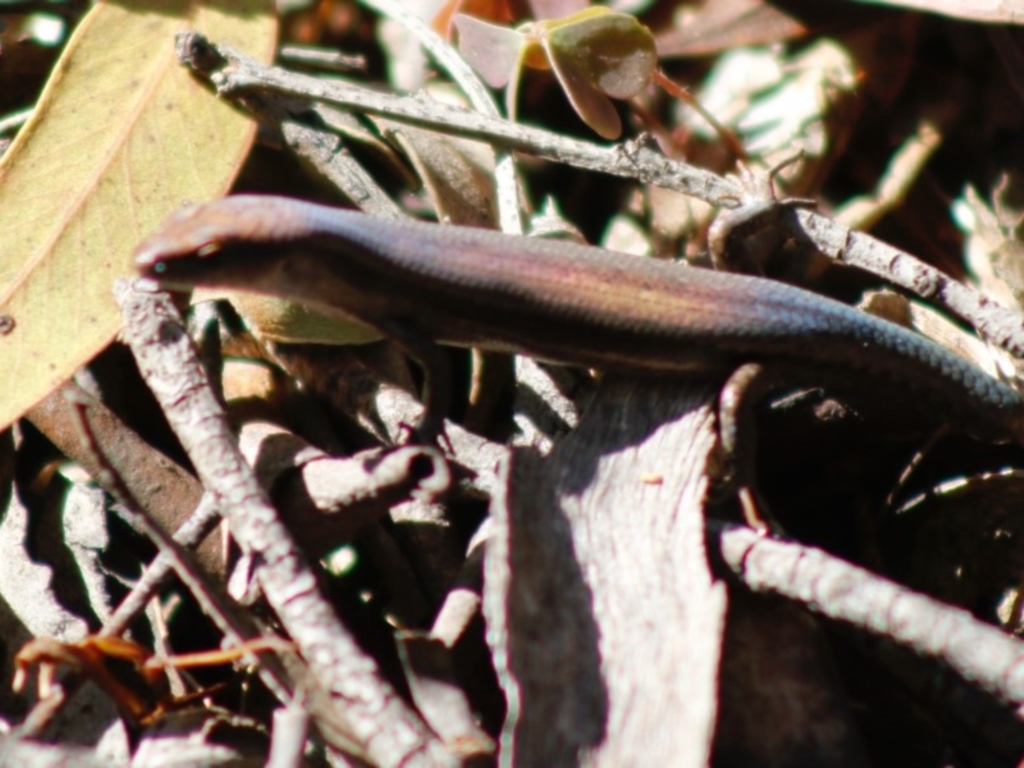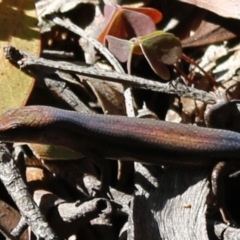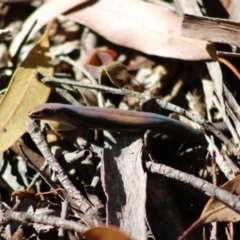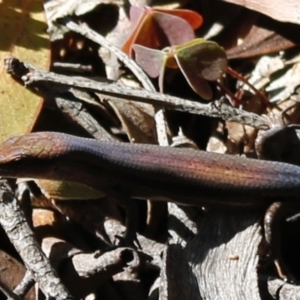Common Garden Skink at Mongarlowe, NSW
Identification history
| Lampropholis guichenoti | 30 Apr 2020 | WillO | ||
| Lampropholis guichenoti | 30 Apr 2020 | WillO | ||
| Unidentified | 28 Apr 2020 | LisaH |
Identify this sighting
Please Login or Register to identify this sighting.
8 comments
wombey
wrote:
28 Apr 2020
In one of those images there appears to be four fingers, very interesting. Still like to hear Will's views
WillO
wrote:
29 Apr 2020
This is a very difficult identification given the very out of focus photo. In the fourth image I can see a broad dark lateral stripe that is edged below by a thin white line and is possibly also edged above by a partial pale stripe as well. Carlia tetrodactyla is a possibility (need a clearer view of fingers) but does not have those side stripes. Taking the locality in to consideration I suggest the most likely species for this one is Pseudemoia entrecasteauxii.
wombey
wrote:
29 Apr 2020
I see what you mean regarding the lateral stripes. I agree that the most logical possibility is that it could be entrecasteauxii. I am have to suggest that species at this time if you agree Will. The head scales seem to fit.
LisaH
wrote:
29 Apr 2020
Thank you both for you time and patience - this has been an interesting learning for me. (There are clearer pictures of the entire animal, rather than just toes, on sighting #4257987)
WillO
wrote:
29 Apr 2020
Hi John and Lisa - I am happy to support a decision that it is P. entrecasteauxii.
WillO
wrote:
30 Apr 2020
Hi Lisa and John. This morning i found I could get clearer images of your skink. For some reason it was my computer making the images blurry. With a clearer view and zooming in I can just make out the head shields of the lizard (looks like undivided frontoparietal scale) on one image and a clearer view of the striping on the body - I can now see an indistinct broad mid dorsal stripe and on the side a dark lateral stripe edged with a narrow somewhat indistinct white stripe. The head is noticeably coppery in colour compared to grey and slightly flecked body. I can see the toes better now but not quite well enough to ascertain that it had five not four toes. However, with you information about toe number then i accept that it has five fingers so, as John indicated, not a Lygisaurus foliorum (tree-base litter skink) which it closely resembles in some photos (I think it was the light dappling on the skink that made it look a bit like that species in some of the photos). I am pretty confident now that it is not P. entrecasteauxii (sorry for taking us down that path). The best fit is with Lampropholis guichenoti.
You are probably getting the wrong impression about the difficulty of skink id work from photos - and John and I have been identifying reptiles for most of our lives! Normally it is very straightforward. Hopefully your next photos will be easier to do. Still we do enjoy a challenge - good for the brain. When John has had another look we can change the id - for now I will list it as a skink.
You are probably getting the wrong impression about the difficulty of skink id work from photos - and John and I have been identifying reptiles for most of our lives! Normally it is very straightforward. Hopefully your next photos will be easier to do. Still we do enjoy a challenge - good for the brain. When John has had another look we can change the id - for now I will list it as a skink.
wombey
wrote:
30 Apr 2020
I agree, skinks can be a problem even when you have them in your hand, never mind trying to get past the light tricks and missing bits like fingers offered in a photograph. I was a bit nervous about entrecasteauxii but unable to offer anything else myself. I am happy to go with guichenoti as it seems to fit that it the absence of any better suggestions.
LisaH
wrote:
3 May 2020
Thank you both so much for all your hard work and the time you spent looking at these dubious photos - much appreciated.
Location information
- Coordinates 149.962047-35.408167
- Maps Mongarlowe River QPRC LGA
- Places Mongarlowe, NSW
Sighting information
- 1 Abundance
- 27 Apr 2020 01:15 PM Recorded on
- LisaH Recorded by
-
Collections
My flagged sightings
Species information
- Lampropholis guichenoti Scientific name
- Common Garden Skink Common name
- Not Sensitive
- Local native
- Non-Invasive
- Up to 1448.5m Recorded at altitude
- 135 images trained Machine learning
Record quality
- Images or audio
- More than one media file
- Confirmed by an expert moderator
- Nearby sighting(s) of same species
- GPS evidence of location
- Description
- Additional attributes











